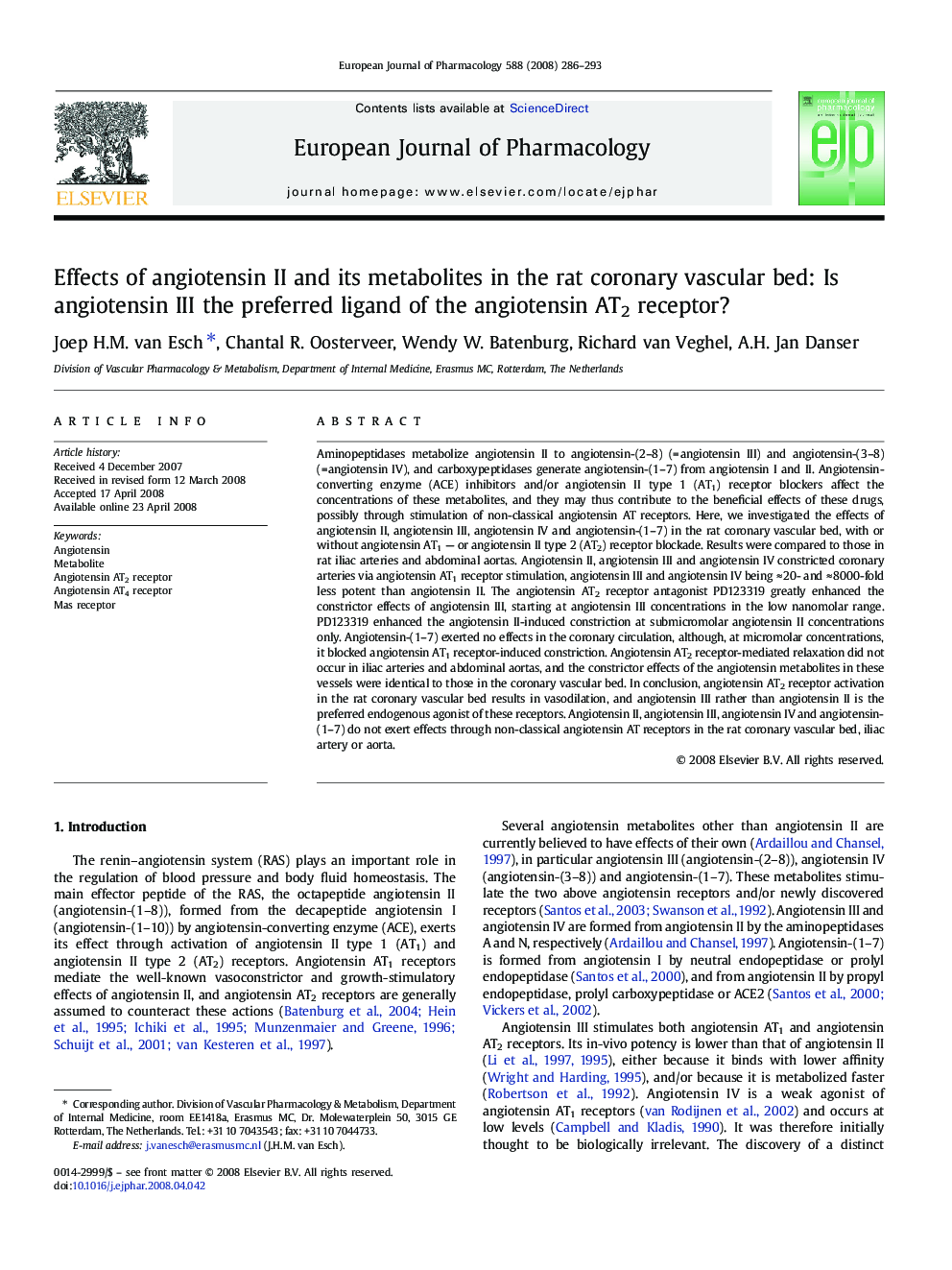| کد مقاله | کد نشریه | سال انتشار | مقاله انگلیسی | نسخه تمام متن |
|---|---|---|---|---|
| 2535195 | 1559108 | 2008 | 8 صفحه PDF | دانلود رایگان |
عنوان انگلیسی مقاله ISI
Effects of angiotensin II and its metabolites in the rat coronary vascular bed: Is angiotensin III the preferred ligand of the angiotensin AT2 receptor?
دانلود مقاله + سفارش ترجمه
دانلود مقاله ISI انگلیسی
رایگان برای ایرانیان
کلمات کلیدی
موضوعات مرتبط
علوم زیستی و بیوفناوری
علم عصب شناسی
علوم اعصاب سلولی و مولکولی
پیش نمایش صفحه اول مقاله

چکیده انگلیسی
Aminopeptidases metabolize angiotensin II to angiotensin-(2-8) (= angiotensin III) and angiotensin-(3-8) (= angiotensin IV), and carboxypeptidases generate angiotensin-(1-7) from angiotensin I and II. Angiotensin-converting enzyme (ACE) inhibitors and/or angiotensin II type 1 (AT1) receptor blockers affect the concentrations of these metabolites, and they may thus contribute to the beneficial effects of these drugs, possibly through stimulation of non-classical angiotensin AT receptors. Here, we investigated the effects of angiotensin II, angiotensin III, angiotensin IV and angiotensin-(1-7) in the rat coronary vascular bed, with or without angiotensin AT1 - or angiotensin II type 2 (AT2) receptor blockade. Results were compared to those in rat iliac arteries and abdominal aortas. Angiotensin II, angiotensin III and angiotensin IV constricted coronary arteries via angiotensin AT1 receptor stimulation, angiotensin III and angiotensin IV being â 20- and â 8000-fold less potent than angiotensin II. The angiotensin AT2 receptor antagonist PD123319 greatly enhanced the constrictor effects of angiotensin III, starting at angiotensin III concentrations in the low nanomolar range. PD123319 enhanced the angiotensin II-induced constriction at submicromolar angiotensin II concentrations only. Angiotensin-(1-7) exerted no effects in the coronary circulation, although, at micromolar concentrations, it blocked angiotensin AT1 receptor-induced constriction. Angiotensin AT2 receptor-mediated relaxation did not occur in iliac arteries and abdominal aortas, and the constrictor effects of the angiotensin metabolites in these vessels were identical to those in the coronary vascular bed. In conclusion, angiotensin AT2 receptor activation in the rat coronary vascular bed results in vasodilation, and angiotensin III rather than angiotensin II is the preferred endogenous agonist of these receptors. Angiotensin II, angiotensin III, angiotensin IV and angiotensin-(1-7) do not exert effects through non-classical angiotensin AT receptors in the rat coronary vascular bed, iliac artery or aorta.
ناشر
Database: Elsevier - ScienceDirect (ساینس دایرکت)
Journal: European Journal of Pharmacology - Volume 588, Issues 2â3, 7 July 2008, Pages 286-293
Journal: European Journal of Pharmacology - Volume 588, Issues 2â3, 7 July 2008, Pages 286-293
نویسندگان
Joep H.M. van Esch, Chantal R. Oosterveer, Wendy W. Batenburg, Richard van Veghel, A.H. Jan Danser,